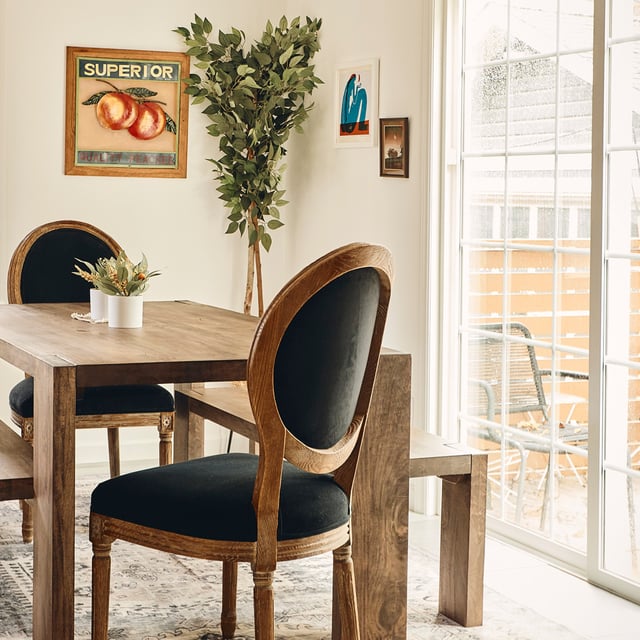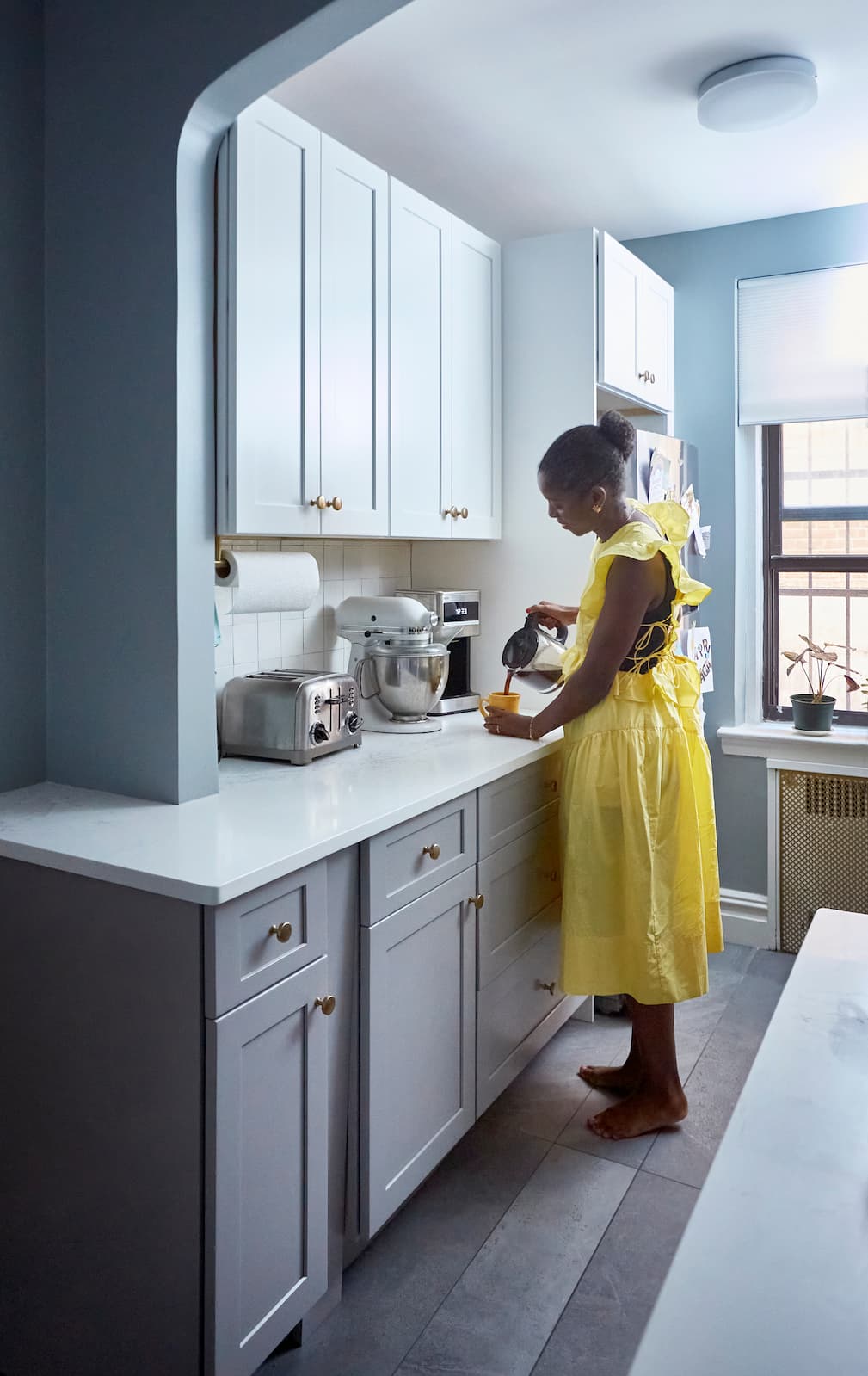
Home Addition
Master Suite Additions Over Garage: Cost & Planning
12.22.2025
Our New Year savings event is here: Get up to $6,500 off your project today (terms apply).


In This Article
Adding space to your home doesn’t always require a major overhaul. For many homeowners, a bump out addition is a practical way to solve everyday challenges—like a cramped kitchen, a too-small bathroom, or the need for a quiet workspace. These compact expansions can make a noticeable difference in how your home feels and functions, all while keeping construction time and costs in check. This guide covers the essentials: what a bump out is, what it typically costs, the pros and cons, and a range of creative ideas to help you get the most from your space.
A bump out addition is a modest extension of an existing room, designed to add just enough square footage to solve a specific problem. For example, a kitchen bump out might add four feet to one wall, making room for a breakfast nook or extra cabinets. A bathroom bump out could allow for a double vanity or a walk-in shower. Some homeowners use a bump out to create a cozy window seat in the living room, expand a master bedroom for a walk-in closet, or carve out space for a mudroom at the back entry.
Most bump outs range from two to eight feet in depth and can be as wide as the room they’re attached to—though some extend only a portion of the wall. Unlike a full addition, a bump out does not create a new, separate room or dramatically alter the home’s footprint. It’s not a second story, a full wing, or a basement expansion. Instead, it’s a targeted solution for homes that need just a little more space in a specific area.
Small bump outs—such as a bay window or a few extra feet for a bathroom—can start around $5,000 to $15,000. More substantial projects, like expanding a kitchen or master bedroom, often range from $20,000 to $50,000. High-end or highly customized bump outs, especially those involving significant plumbing or structural work, can reach $80,000 or more.
Key cost drivers include foundation work, roofing, electrical and plumbing updates, and the quality of materials. Labor rates and permitting fees also vary by region. While bump outs are generally more affordable than full-scale additions, it’s important to work with a contractor who can provide a detailed, line-item estimate and help you anticipate any hidden costs.
Transparent Pricing You Can Trust

Pros:
Cons:
A kitchen bump out can transform a cramped galley into a more open, functional space. By extending the kitchen wall by a few feet, you can add an island, create a breakfast nook, or simply improve the configuration for cooking and entertaining. This type of project often involves moving plumbing or electrical lines, so it’s important to plan carefully with your contractor.
Matching cabinetry, flooring, and finishes helps the new space feel like a natural extension of your existing kitchen. Consider adding windows or a skylight to bring in more natural light, making the kitchen both brighter and more inviting.
A bump out bathroom addition is a smart way to add a shower or extra storage to a tight space. This is especially valuable in older homes with small bathrooms. Plumbing and waterproofing are critical, so work with professionals who understand the technical requirements.
Expanding a bathroom can also improve accessibility, making it easier to move around or accommodate aging in place. Even a few extra feet can make a big difference in comfort and usability.
A bump out master bedroom addition can provide space for a walk-in closet, a sitting area, or even a private bath. This type of project often involves extending the bedroom by several feet, which can dramatically improve comfort and privacy.When designing a master suite bump out, think about how the new space will enhance relaxation and functionality. High-quality finishes, thoughtful lighting, and integrated storage can turn a standard bedroom into a true retreat.
Extending a living or family room with a bump out can create a more open, flexible space for gatherings and relaxation. This is a great way to add a reading nook, play area, or simply more room for seating. Structural integration with the existing roof and foundation is key to a seamless result.Consider how the bump out will affect traffic flow and furniture placement. Large windows or sliding doors can bring in natural light and connect the space to the outdoors, making the room feel even larger.
A small bump out addition can provide the perfect spot for a home office or study, especially as remote work becomes more common. This dedicated space can be designed for focus and productivity, with built-in shelving, ample outlets, and good lighting.When planning a home office bump out, consider soundproofing and privacy. Positioning the office away from high-traffic areas of the home can help minimize distractions and create a more professional environment.
A bump out can be an ideal solution for adding a mudroom or expanding a cramped entryway. This space can include built-in storage, seating, and durable flooring to handle daily wear and tear. A well-designed mudroom helps keep the rest of the home organized and clean.Think about how the mudroom will connect to the garage or main living areas. Easy access and thoughtful storage solutions can make this small addition one of the most functional spaces in your home.
Creating a dedicated dining area or breakfast nook with a bump out can make mealtimes more enjoyable and free up space in the kitchen or living room. This addition can be as simple as a bay window with built-in seating or a larger extension for a full dining table.When designing a dining bump out, consider natural light and views. Large windows or French doors can create a bright, inviting space that quickly becomes a favorite spot in the home.
Renovate with confidence every step of the way
Step 1: Personalize Your Renovation Plan
Step 2: Receive Quotes from Trusted Contractors
Step 3: Let Us Handle the Project Details

Finding a contractor you can trust is often the hardest part of any renovation. Block was created to change that. Instead of leaving you to sift through online reviews or rely on word-of-mouth, we do the legwork for you—identifying professionals who have a proven record with projects like bump out additions.
Our process is hands-on and homeowner-focused. We look beyond paperwork, taking into account real project outcomes, communication style, and the ability to solve problems as they arise. Because building codes and permitting can vary dramatically from place to place, we connect you with contractors who are already familiar with your local requirements—whether you’re in Westchester, NY or Fremont, CA.
Throughout your project, Block is available as a sounding board and advocate. We offer clear, upfront pricing and keep you informed at every stage, so you’re never left guessing about next steps. With Block, you gain more than a list of names—you gain a support system designed to help you achieve the home you want, with fewer headaches along the way.

Written by Block Renovation
How big can a bump out addition be?
How long does it take to build a bump out?
Is it more costly to build a bump out on older structures?
Is hiring an architect necessary for a bump out?
Hiring an architect isn’t necessary for a bump out. However, they can bring valuable expertise to the project—especially if your project involves structural changes, complex design elements, or if you want to ensure the new space blends seamlessly with your existing home.
For straightforward, small-scale bump outs, an experienced contractor or design-build firm may be able to handle both the design and construction. However, an architect can help you maximize the functionality and aesthetics of your addition, navigate permitting, and avoid costly mistakes. If you’re unsure, start by consulting with a contractor to determine the level of design support your project will need.

Renovate confidently with Block
Easily compare quotes from top quality contractors, and get peace of mind with warranty & price protections.
Thousands of homeowners have renovated with Block

4.5 Stars (100+)

4.7 Stars (100+)

4.5 Stars (75+)

Home Addition
Master Suite Additions Over Garage: Cost & Planning
12.22.2025

Home Addition
Building a Dormer Addition: Cost & Other Considerations
12.21.2025

Home Addition
How Much Does It Cost to Build or Remodel a Guest House?
11.22.2025

Home Addition
Bungalow Addition Ideas & Costs: Add More Space to Your Bungalow
11.14.2025

Home Addition
Cape Cod Additions - How to Do it Right
11.14.2025
Renovate confidently